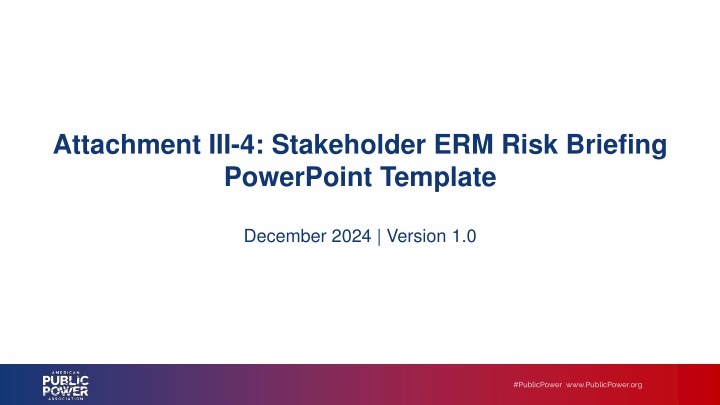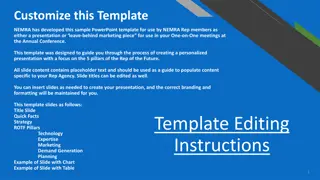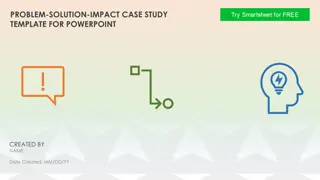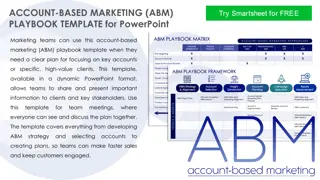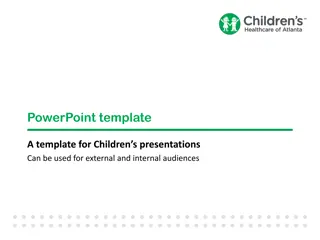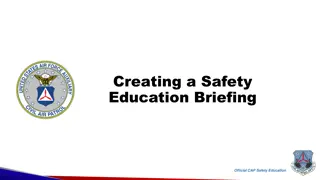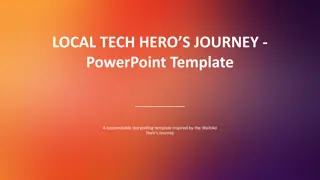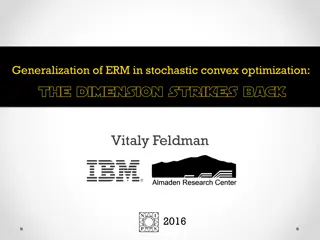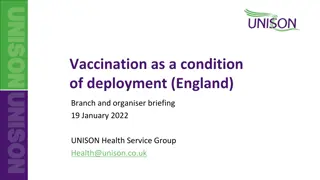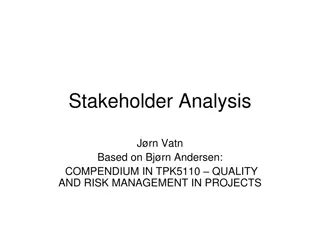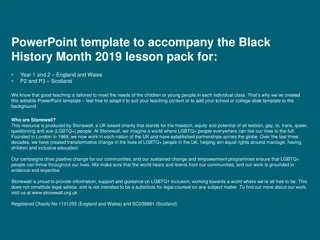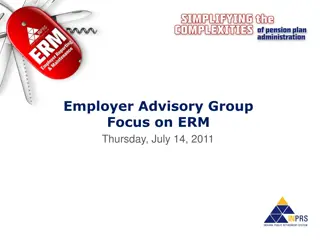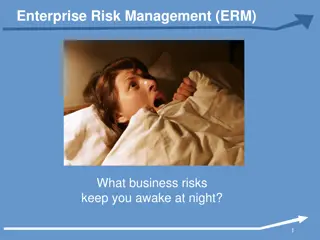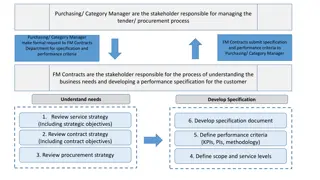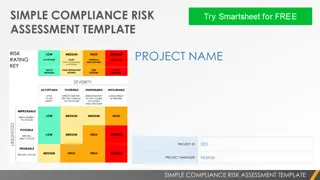Stakeholder ERM Risk Briefing PowerPoint Template - December 2024
This PowerPoint template for stakeholder ERM risk briefings in December 2024 is a valuable resource for creating impactful presentations. Incorporating the latest design trends, this template offers a professional layout that is easy to customize with your specific content. Enhance your risk communication with this visually appealing and informative template.
Download Presentation

Please find below an Image/Link to download the presentation.
The content on the website is provided AS IS for your information and personal use only. It may not be sold, licensed, or shared on other websites without obtaining consent from the author.If you encounter any issues during the download, it is possible that the publisher has removed the file from their server.
You are allowed to download the files provided on this website for personal or commercial use, subject to the condition that they are used lawfully. All files are the property of their respective owners.
The content on the website is provided AS IS for your information and personal use only. It may not be sold, licensed, or shared on other websites without obtaining consent from the author.
E N D
Presentation Transcript
Attachment III-4: Stakeholder ERM Risk Briefing PowerPoint Template December 2024 | Version 1.0 #PublicPower www.PublicPower.org
Agenda Utility s ERM program background ERM program accomplishments and updates Summary of utility s risks Next steps and future outlook
Vision & Mission Statement/ERM Policy [Insert utility s vision & mission statement or ERM policy here] #PublicPower www.PublicPower.org
ERM Governance Structure [Insert utility s ERM governance structure here] #PublicPower www.PublicPower.org
ERM Approach and Timeline Identify and agree on risks and/or opportunities to the achievement of strategic goals and objectives Occurs quarterly Business priorities, vision and mission, performance and objectives Identify Assess risks against standard risk rating criteria to support qualitative risk prioritization for impact, likelihood, and management preparedness Occurs quarterly Monitor risk mitigation effectiveness using leading, not lagging, metrics; leverage defined acceptable risk tolerance and/or KRIs to inform risk escalations Occurs biannually Enterprise Risk Management Process Monitor Assess Communicate Respond Identify risk responses and adjust strategy to achieve or exceed performance objectives balanced to risk appetite Ongoing Provide a holistic risk portfolio report focused on achieving performance objectives and designed to enable management decision-making Ongoing #PublicPower www.PublicPower.org
Risk Assessment Scale Likelihood [Include definition of likelihood and utility s likelihood scale] Level 1 2 3 4 5 Likelihood Criteria Rare: Unlikely to occur, <5% chance Unlikely: Could occur occasionally, 5% - 20% chance Possible: Might occur, 21% - 50% chance Likely: Will probably occur, 51% - 80% chance Almost Certain: Expected to occur, > 80% chance #PublicPower www.PublicPower.org #PublicPower www.PublicPower.org
Risk Assessment Scale Impact [Include definition of likelihood and utility s impact scale] Level 1 2 3 4 5 Impact Criteria Insignificant: No significant impact Minor: Limited impact, easily manageable Moderate: Noticeable impact, manageable Major: Significant impact, requires attention Catastrophic: Severe impact, critical #PublicPower www.PublicPower.org #PublicPower www.PublicPower.org
Utilitys Risk Tolerance Levels and Risk Limits Tolerance Level Residual Risk Score Scale Risk Category Risk Details Risk Limit [Include definition of risk tolerance and risk limit] [Include relationship of risk tolerance and limits to how the utility s prioritizes risks] Minimal operational downtime ensures service reliability and prevents customer dissatisfaction. For public power utilities, keeping downtime below X hours helps maintain consistent service. Limits financial exposure to manageable levels, ensuring the utility can absorb potential losses without significant impact on its operations or financial stability. Maintaining a low threshold for safety incidents helps ensure a safe working environment and compliance with safety regulations. This limit helps to minimize risks to personnel and prevent potential hazards. Restricting customer outages to X incidents per year helps maintain high service levels and customer satisfaction. This level is low enough to prevent widespread dissatisfaction while allowing for minor issues. Ensures stringent measures are in place to prevent breaches. A zero- tolerance approach to cybersecurity breaches protects critical infrastructure and sensitive data. 1-4: Low risk 5-8: Moderate risk 9-10: High risk Immediate action required if downtime exceeds X hours Operational Downtime Low (0-X hours) 1-4: Low risk 5-7: Moderate risk 8-10: High risk Review and mitigate if financial loss exceeds $XXX Moderate ($0 - $XXX) Financial Loss Immediate review and action required if incidents exceed X per year 1-4: Low risk 5-7: Moderate risk 8-10: High risk Low (0 - X incidents per year) Safety Incidents Immediate corrective action required if outages exceed X per year 1-4: Low risk 5-7: Moderate risk 8-10: High risk Low (0 - X incidents per year) Customer Outages Immediate review and improvement if breaches exceed X incidents 1-4: Low risk 5-7: Moderate risk 8-10: High risk Cybersecurity Breaches Low (0 - X incidents #PublicPower www.PublicPower.org
ERM Program Accomplishments & Activities [Include recent accomplishments (depending on the ERM program s reporting schedule) of the ERM program such as conduction of workshops, interviews, update to risk register, identification of new risks, etc.] [Include staffing/personnel updates, if necessary] [Encourage stakeholders to stay engaged in risk identification throughout the year] #PublicPower www.PublicPower.org
Risk Assessment Summary Risk Register #PublicPower www.PublicPower.org
Risk Assessment Results Heat Map Likelihood 1 5 (Very Unlikely) 2 (Unlikely) 3 (Possible) 4 (Likely) (Almost Certain) R002 5 (Catastrophic) R001 Impact 4 (Major) 3 (Moderate) R003 2 (Minor) 1 (Negligible) #PublicPower www.PublicPower.org
Utilitys Risk Landscape Compared to States Risk Profile (Optional) [Utilities can utilize their respective state s energy sector risk profile to compare against their identified and prioritized risks] Utilities can obtain information from the DOE State and Regional Risk Profiles #PublicPower www.PublicPower.org
Next Steps for ERM Program [List short-term goals and long-term goals of the ERM program] This could include upcoming risk-related trainings available Opportunity to get involved in the risk process [List ways how stakeholders can continue informing the ERM committee on existing and emerging risks] [Provide point of contact for the ERM committee/program] #PublicPower www.PublicPower.org
